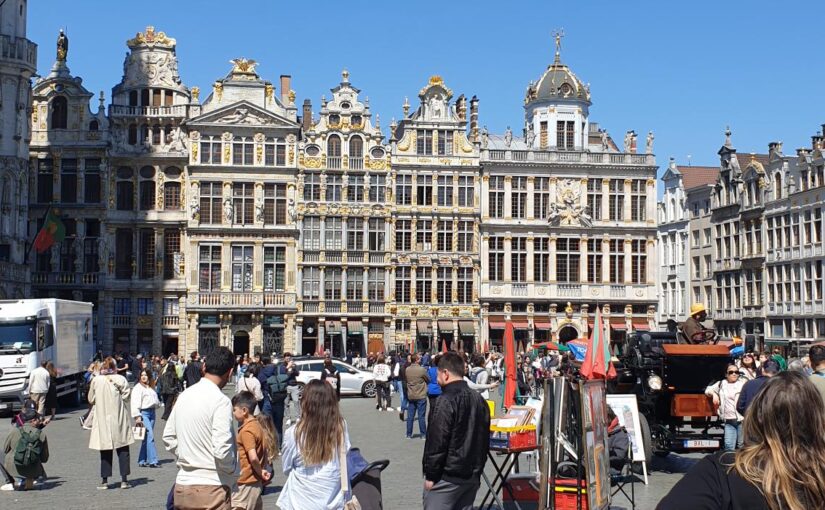As regular readers and subscribers to this blog will know, I was lucky enough to be in Brussels last week giving a talk to the very knowledgeable Brussels Brontë Group. It was great to talk to so many enthusiastic Brontë fans from Europe and beyond, and it was wonderful to be able to follow in the footsteps of Charlotte and Emily Brontë.
Emily Brontë was in Brussels in 1842 and Charlotte was there in 1842 and 1843. Much of Brussels has changed and expanded since those days but there are still tantalising glimpses of the cobbled streets and buildings that the Brontës would have known, many of which found their way into Charlotte’s novels The Professor and Villette. Today’s post is a picture heavy one as I reveal some of these places via pictures taken on my mobile phone’s camera.
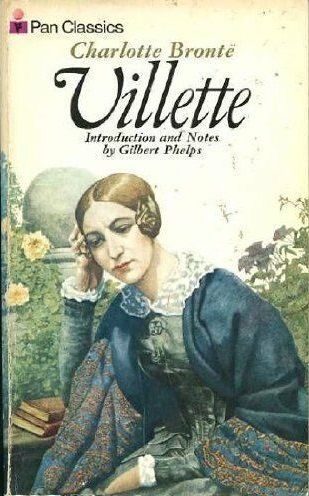
I was lucky enough to stay on the Rue Royale, in the old town’s Royal quarter and just a short hop from the location of the building that brought Charlotte and Emily to Belgium: the Pensionnat Heger school.
The school stood at the foot of a series of steps guarded by a statue of General Belliard, a hero of the Belgian fight for independence just a few years before the Brontës arrived in the newly formed country of Belgium. Here is this statue today, and here are the Belliard steps the Brontë sisters would have walked down as they first made their way to the school.
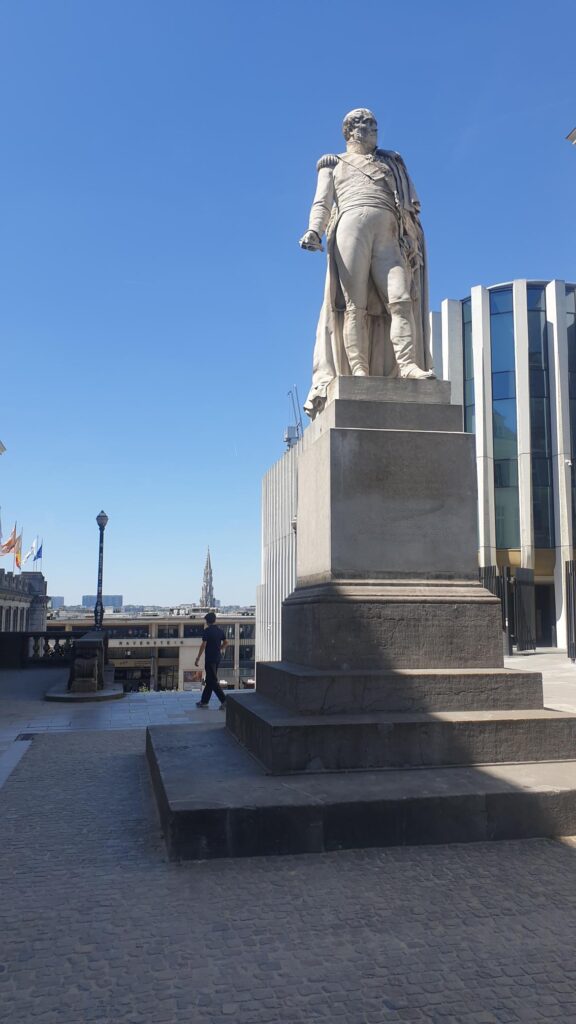
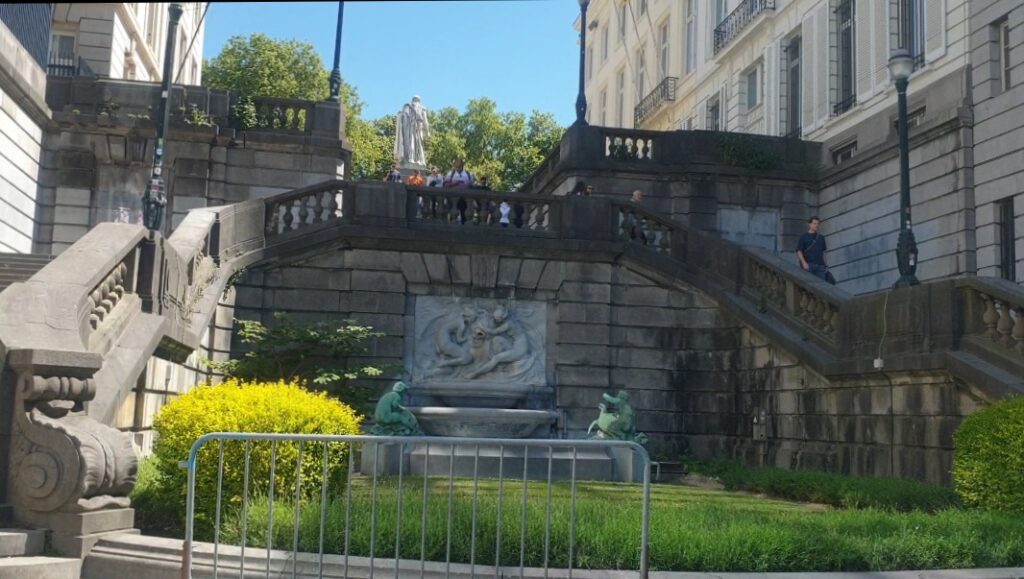
Alas, the school itself and the street it stood on are no longer there, victims to the modernisation of Brussels, but this BNP Paribas building marks the spot where the Pensionnat Heger stood.

There are two plaques nearby bearing tribute to Charlotte and Emily Brontë, but they are not at eye level and are easily missed.
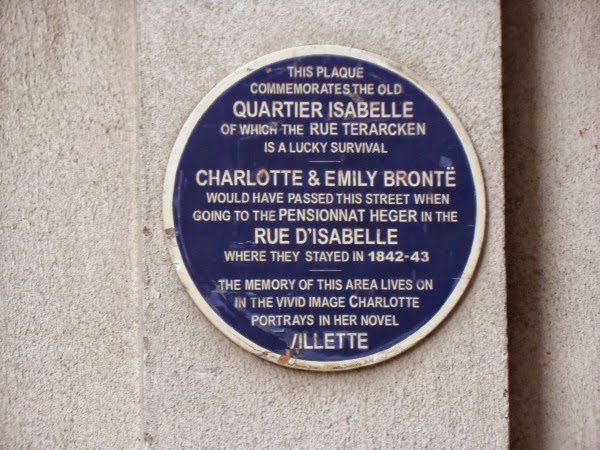
It is a short walk from here to the beautiful and imposing St. Gudula’s Cathedral. Charlotte Brontë was certainly no fan of Catholicism or its followers, a subject I touched on in my Brussels talk about the Brontës and their faith, and yet remarkably she went to confession at the cathedral and made Lucy Snowe do the same in Villette. On 1st September 1843 Charlotte wrote to Emily to tell her what had happened:
‘An odd whim came into my head. In a solitary part of the Cathedral six or seven people still remained kneeling by the confessionals. In two confessionals I saw a priest. I felt as if I did not care what I did, provided it was not absolutely wrong, and that it served to vary my life and yield a moment’s interest. I took a fancy to change myself into a Catholic and go and make a real confession to see what it was like. Knowing me as you do, you will think this odd, but when people are by themselves they have singular fancies… I actually did confess – a real confession… I think you had better not tell Papa of this. He will not understand that it was only a freak, and will perhaps think I am going to turn Catholic.’
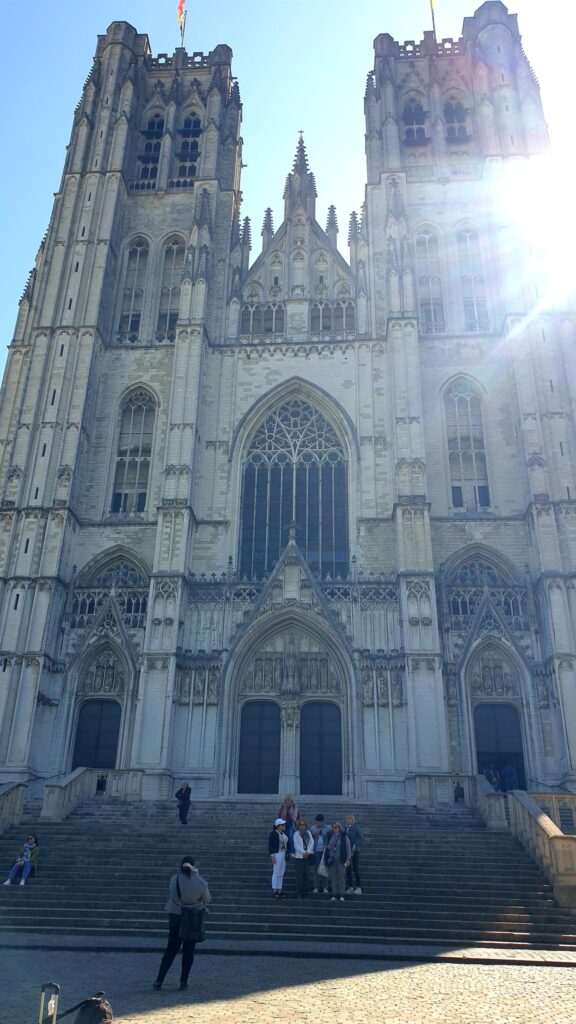
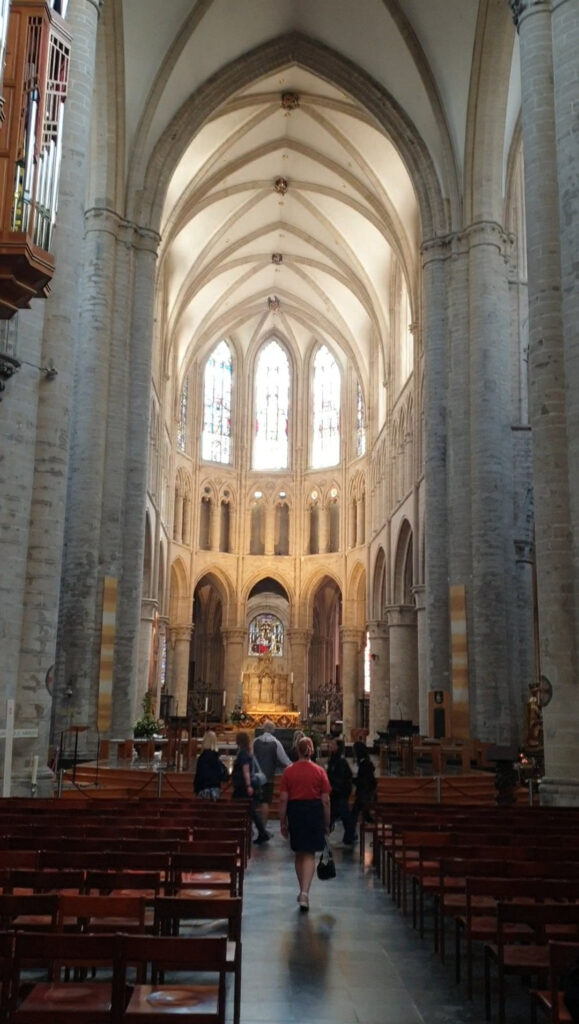
I will return to the Rue Royale now, and a picture I took of it last Sunday shortly before heading to the Midi station for the Eurostar back to London.
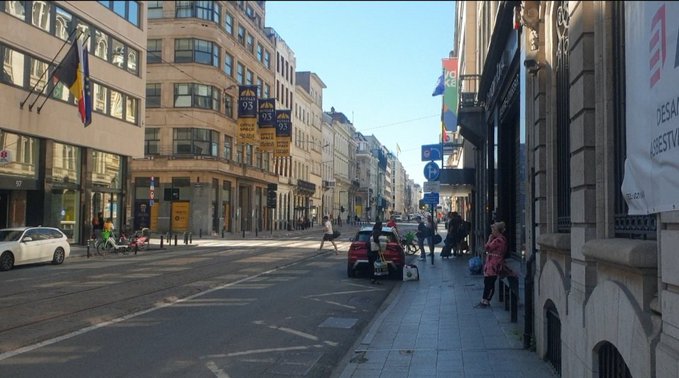
It was on this very street in November 1843 that Charlotte Brontë saw Queen Victoria, and we again turn to a letter that Charlotte wrote to her sister Emily Brontë:
“You ask about Queen Victoria’s visit to Brussels. I saw for her an instant flashing through the Rue Royale in a carriage and six, surrounded by soldiers. She was laughing and talking very gaily. She looked a little stout, vivacious lady, very plainly dressed, not much dignity or pretension about her. The Belgians liked her very much on the whole. They say she enlivened the sombre court of King Leopold, which is usually as gloomy as a conventicle.”
This is particularly relevant, as this week the roles were reversed: our present Queen made a visit to the birthplace of Charlotte Brontë. Camilla, the Queen Consort, was in Bradford as part of their UK City Of Culture celebrations, and it was wonderful to see that she paid a visit to the Brontë birthplace in Thornton:
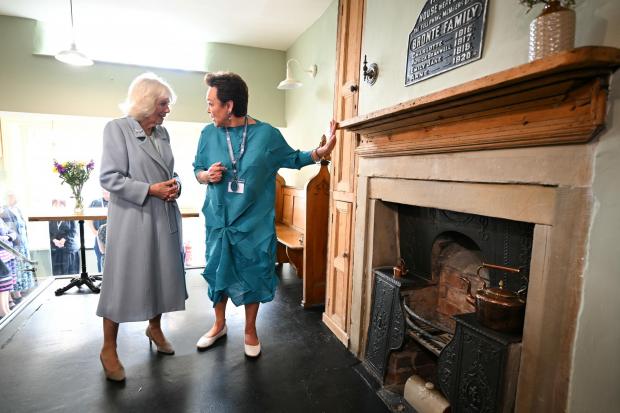
By all accounts Her Majesty was both charming and charmed. I was charmed in a different way this week when I received in the post from Belgium a wonderful package from talented artist and calligrapher Marina Saegerman. Marina sent me a Brontë calendar and a collection of Brontë poems with accompanying artwork, all of which were breathtakingly beautiful! Thank you so much Marina, I know you are a keen reader of this blog and thank you too for your kind words about my talk in Brussels last week.
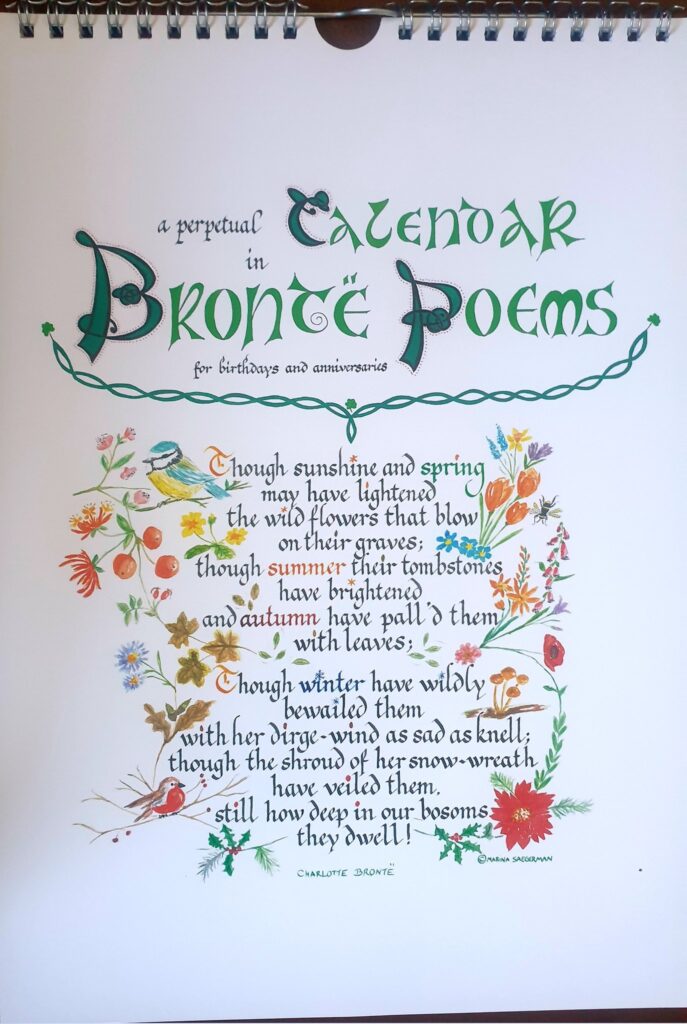
We will leave the Brontës in Brussels for now, but I will have more pictures and lots more about their time there in next week’s Brontë blog post – along with news of how you can gain access to the information contained in my lecture if you weren’t there (or even if you were). I hope you can join me here next week, until then ‘au revoir.’
